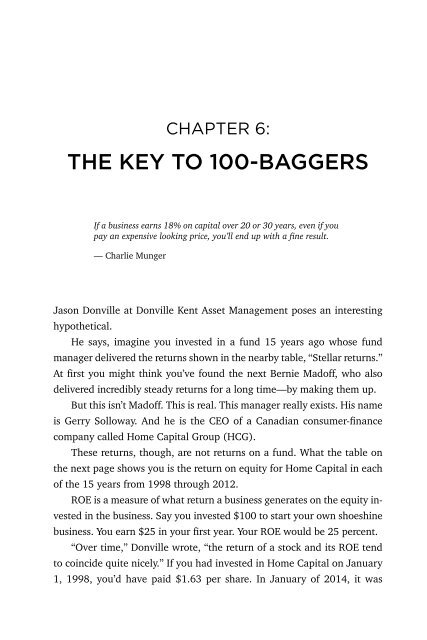You also want an ePaper? Increase the reach of your titles
YUMPU automatically turns print PDFs into web optimized ePapers that Google loves.
CHAPTER 6:<br />
THE KEY TO 100-BAGGERS<br />
If a business earns 18% on capital over 20 or 30 years, even if you<br />
pay an expensive looking price, you’ll end up with a fine result.<br />
— Charlie Munger<br />
Jason Donville at Donville Kent Asset Management poses an interesting<br />
hypothetical.<br />
He says, imagine you invested in a fund 15 years ago whose fund<br />
manager delivered the returns shown in the nearby table, “Stellar returns.”<br />
At first you might think you’ve found the next Bernie Madoff, who also<br />
delivered incredibly steady returns for a long time—by making them up.<br />
But this isn’t Madoff. This is real. This manager really exists. His name<br />
is Gerry Solloway. And he is the CEO of a Canadian consumer-finance<br />
company called Home Capital Group (HCG).<br />
These returns, though, are not returns on a fund. What the table on<br />
the next page shows you is the return on equity for Home Capital in each<br />
of the 15 years from 1998 through 2012.<br />
ROE is a measure of what return a business generates on the equity invested<br />
in the business. Say you invested $100 to start your own shoeshine<br />
business. You earn $25 in your first year. Your ROE would be 25 percent.<br />
“Over time,” Donville wrote, “the return of a stock and its ROE tend<br />
to coincide quite nicely.” If you had invested in Home Capital on January<br />
1, 1998, you’d have paid $1.63 per share. In January of 2014, it was


